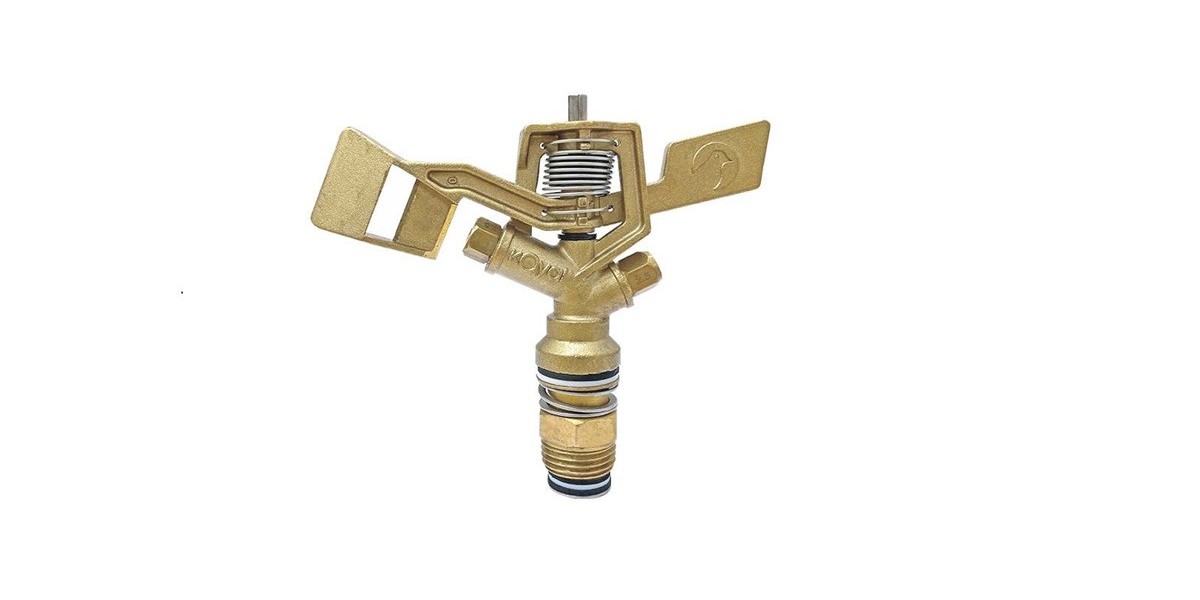Ever wondered why the grass is greener on the other side (literally) on your farm? You may not be the only person feeling that way, as uneven watering is a common issue, often caused by mistakes in your sprinkler setup.
There are all kinds of irrigation tools out there these days: sprinklers, rain guns, micro jets, and even fully automated systems. But for many Indian farms, especially those running on shifting pressure or tough terrain, the brass impact sprinkler still holds its ground because it works reliably, season after season.
At Automat, brass models are built for real field conditions. Whether you’re looking for irrigation solutions for cereal crops, vegetables, or orchard rows, what you need is a system with steady pressure, even throw, and no surprises.
Why Brass?
Choosing a brass impact sprinkler irrigation method depends upon your farm layout, the crops, the shape of your field, how much water pressure you usually get, and how often you need to move the sprinkler around.
For example, if you’re growing vegetables in tighter plots, a compact sprinkler that’s easy to shift might do the trick. But if your field stretches wide with crops like paddy or jowar, it’s better to go with one that can throw water further and stay steady even when the wind picks up.
Automat builds its brass sprinklers to handle just that. Whether working with high-density planting or uneven ground, models like the HT-20PH are designed to stay consistent, giving you even coverage and saving you from constant adjustments.
The Right Brass Sprinkler For Your Field
When it comes to achieving uniform irrigation, choosing the right sprinkler isn’t just a technical decision — it’s about understanding what your field needs. With so many brass options available, the best fit depends on your crop type, field layout, and how much pressure your system can consistently maintain.
- HT-5DN (Koyal) is a reliable option for row crops like carrot, radish, potato, and tomato. Built with a ½” BSP/NPT male connection, this model comes with a sturdy brass body, stainless steel pivot pin and spring, and is designed to perform in both permanent and portable solid-set systems. It operates best at 1.0–3.0 kg/cm² pressure and covers up to 12.5 metres with a 25° trajectory — ideal for medium-density plantings and consistent spacing
- HT-20G (Harit Gold) is designed for more demanding farm conditions. Built with a ¾” brass connection, it’s ideal for crops like sugarcane, maize, wheat, tea, and coffee — all of which need wide, uniform water coverage. Even at lower water pressures, this sprinkler delivers a 13-metre throw at a 27° angle and stays reliable even when lines are moved often or conditions vary.
- HT-20PH is another trusted ¾” model in the lineup, known for its sturdy brass construction and consistent spray. It performs well for groundnut, paddy, jowar, and a variety of vegetables. With a 27° angle and a 9-metre radius, this sprinkler fits best in fields where pressure may rise or dip, or where the irrigation setup is shifted regularly during the season.
- HT-20PC adds flexibility to your irrigation system. If you’ve got borders, slopes, or areas that don’t need full-circle watering, this one’s worth a look. Built with a bronze body and a part-circle mechanism, it can cover up to 15 metres and runs well at higher pressures (2.0–4.0 kg/cm²). The adjustable spray pattern helps you focus water exactly where it’s needed, without waste and is perfect for crops like watermelon, bajra, or tea.
Precision Lasts with Brass
Choosing the right sprinkler might seem like a small decision at first, until you start noticing the difference it makes in your crop health and water use. The right brass impact sprinkler doesn’t just spread water; it brings consistency, saves effort, and helps you get more out of every drop.
Automat’s range is built for real fields, not perfect ones. Whether you're dealing with patchy pressure, uneven plots, or frequent line shifts, there’s a model that fits your setup. Once you find the right one, irrigating your field the right way becomes one less thing to worry about.








